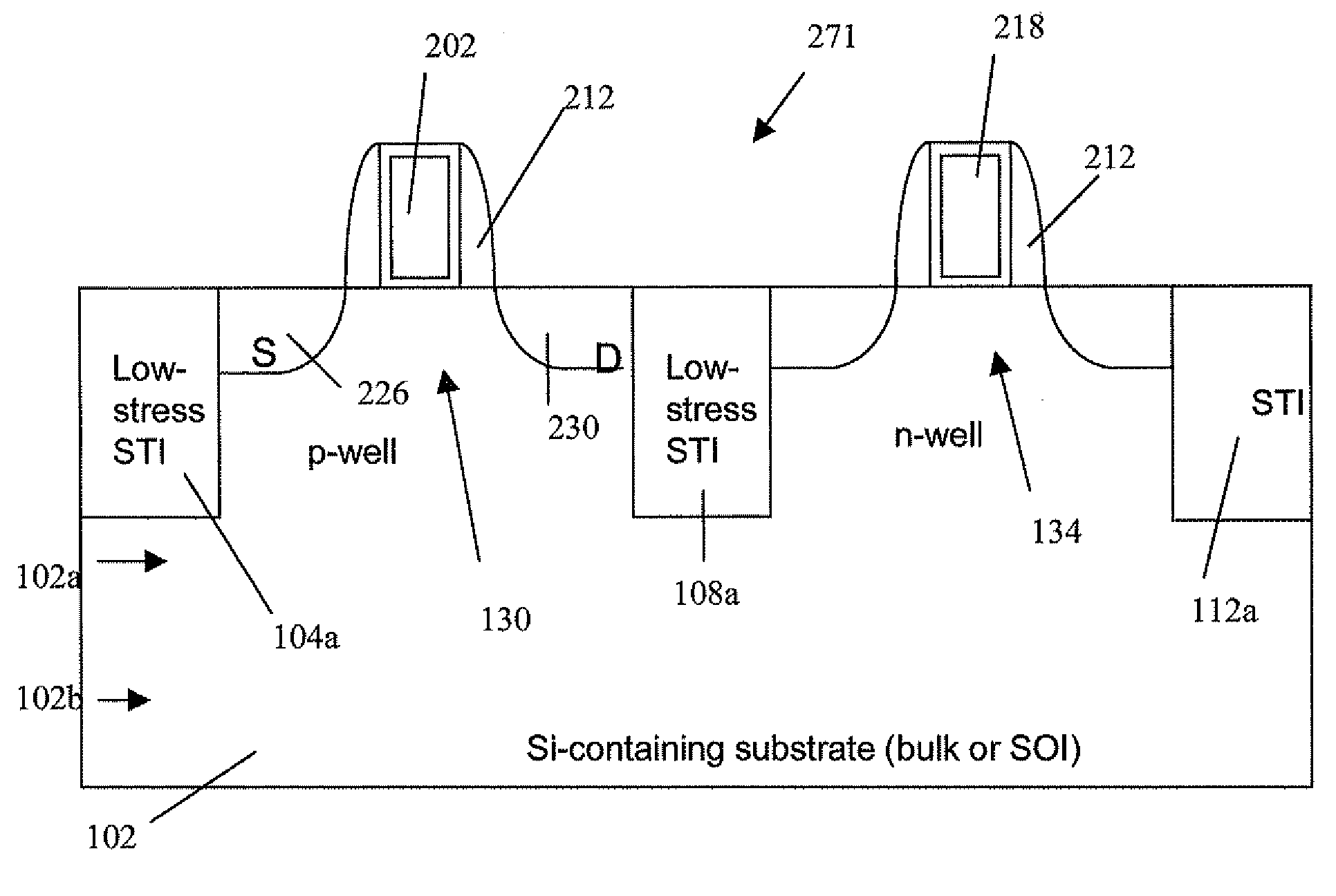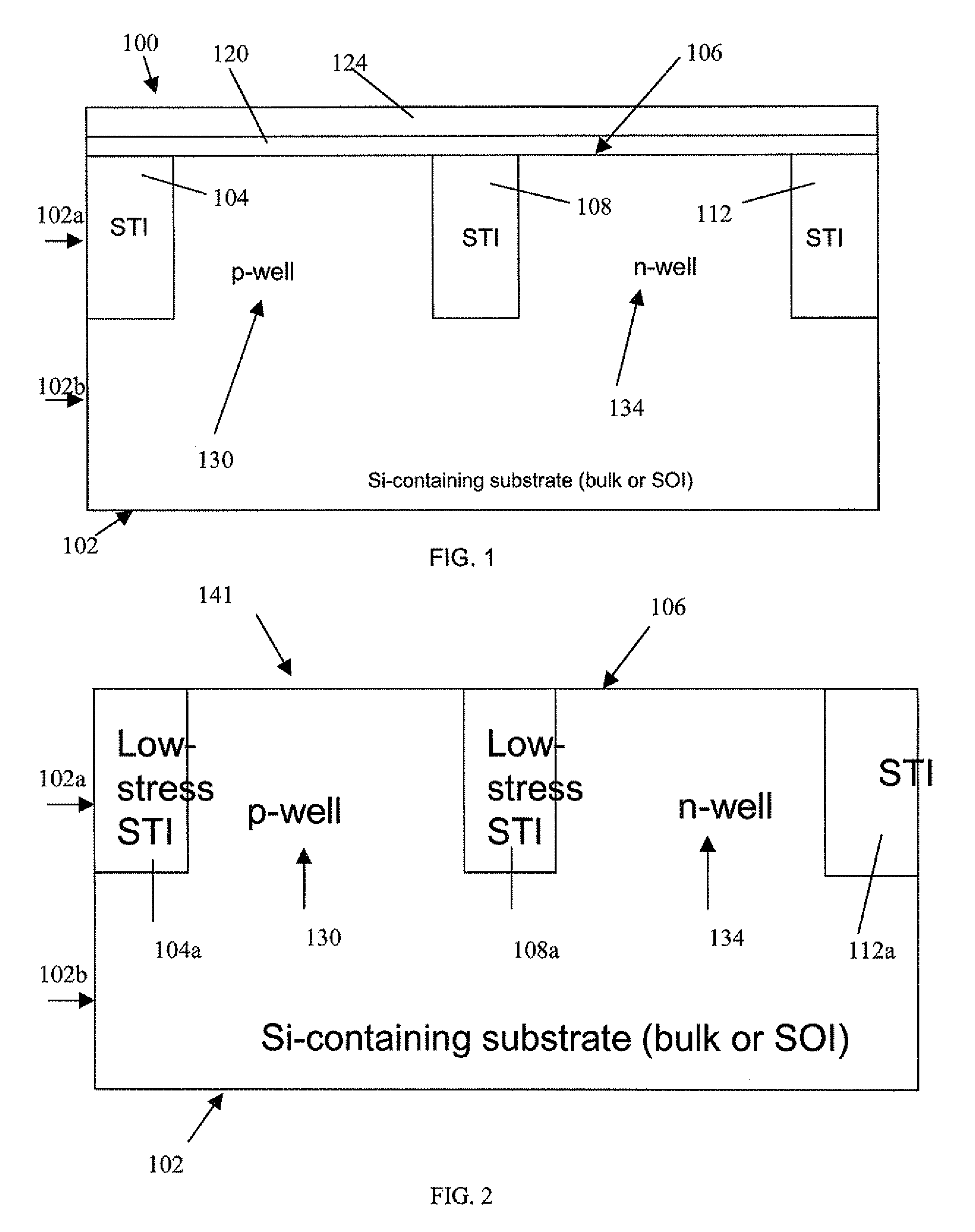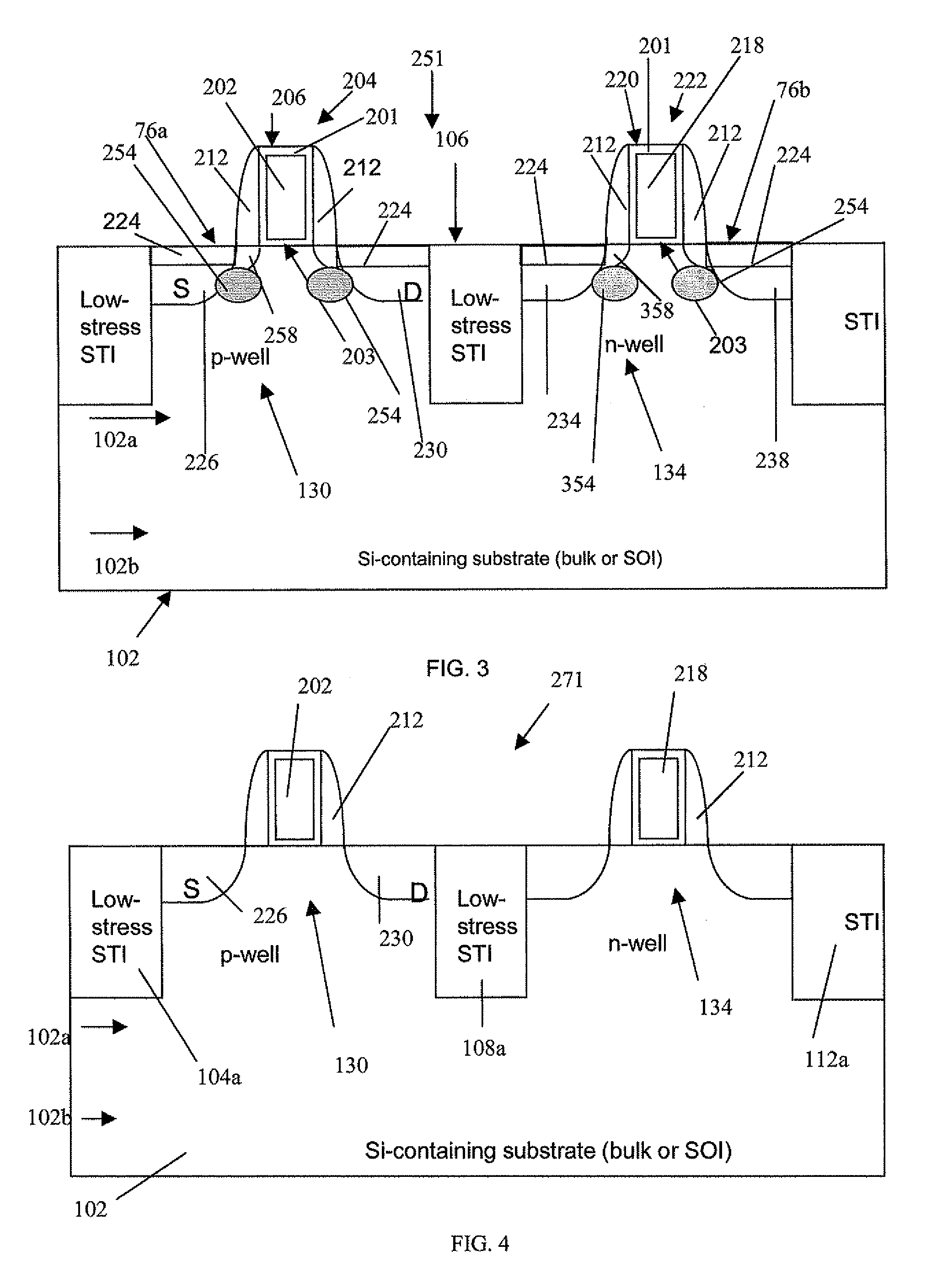Method of Reducing Detrimental STI-Induced Stress in MOSFET Channels
a technology of mosfet and sti, which is applied in the field of shallow trenchisolation-induced stress reduction of mosfet, can solve the problems of sti-induced stress being a component of undesirable narrow width effect, affecting the performance of drive current, and reducing mobility, so as to reduce stress, minimize thermal expansion, and reduce stress
- Summary
- Abstract
- Description
- Claims
- Application Information
AI Technical Summary
Benefits of technology
Problems solved by technology
Method used
Image
Examples
first embodiment
[0029]the method according to the present invention is depicted in FIGS. 1-3 for reducing detrimental STI-induced stress in MOSFET channels during their fabrication. Referring to FIG. 1, a substrate 102 can be, for example, a bulk wafer or SOI, or a substrate comprising silicon, such as SOI (silicon on insulator), bulk silicon, Silicon Germanium-on-insulator (SGOI), Strained silicon directly on insulator (SSDOI).
[0030]The top surface 106 of the substrate 102 is typically cleaned before the process begins to remove any residual layers (e.g., native oxide), foreign particles, and any residual metallic surface contamination and to temporarily protect the cleaned substrate surface. Any residual silicon oxide is first removed, for example, in a solution of hydrofluoric acid.
[0031]Referring to FIG. 1, first formed on the substrate 102 are shallow trench isolation (STI) regions 104, 108, 112, then p-well 130, and n-well 134 regions. The STI regions are typically formed of insulator materia...
PUM
| Property | Measurement | Unit |
|---|---|---|
| temperatures | aaaaa | aaaaa |
| temperature | aaaaa | aaaaa |
| temperature | aaaaa | aaaaa |
Abstract
Description
Claims
Application Information
 Login to View More
Login to View More - R&D
- Intellectual Property
- Life Sciences
- Materials
- Tech Scout
- Unparalleled Data Quality
- Higher Quality Content
- 60% Fewer Hallucinations
Browse by: Latest US Patents, China's latest patents, Technical Efficacy Thesaurus, Application Domain, Technology Topic, Popular Technical Reports.
© 2025 PatSnap. All rights reserved.Legal|Privacy policy|Modern Slavery Act Transparency Statement|Sitemap|About US| Contact US: help@patsnap.com



